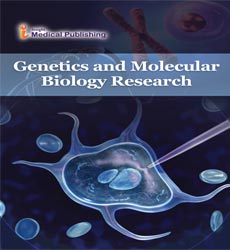Detection of Mass of Human Chromosomes
Shyam Prakash*
Department of Bioinformatics, Jawaharlal Nehru Technology University, India
- Corresponding Author:
- Shyam Prakash
Department of Bioinformatics, Jawaharlal Nehru Technology University, India
E-mail: shyamprakash49@gmail.com
Received Date: May 10, 2021; Accepted Date: May 18, 2021; Published Date: June 10, 2021
Citation: Prakash S (2021) Detection of Mass of Human Chromosomes: Commentary. Genet Mol Biol Res Vol No: 5 Iss No: 3:48
Copyright: © 2021 Prakash S. This is an open-access article distributed under the terms of the Creative Commons Attributions License, which permits unrestricted use, distribution and reproduction in any medium, provided the original author and source are credited.
Researchers used a strong X-ray beam to determine the number of electrons during a spread of 46 chromosomes which they want to calculate mass.
They found that the chromosomes were about 20 times heavier than the DNA they contained – a way larger mass than previously expected, suggesting there could be missing components yet to be discovered.
As well as DNA, chromosomes contain proteins that serve a spread of functions, from reading the DNA to regulating processes of cellular division to tightly packaging two-meter strands of DNA into our cells. This is often heavier than we might expect, and, if replicated, points to unexplained excess mass in chromosomes.”
In the study, researchers used a way called X-ray ptychography, which involves stitching together the diffraction patterns that occur because the X-ray beam passes through the chromosomes, to make a sensitive 3D reconstruction. The fine resolution was possible because the beam deployed at Diamond light was billions of times brighter than the Sun (i.e., there was a sizable number of photons passing through at a given time).
The chromosomes were imaged in metaphase, just before they were close to divide into two daughter cells. this is often when packaging proteins finish up the DNA into very compact, precise structures. Within these are four copies of three. 5 billion base pairs of DNAs. Cancerous once they cannot heal themselves. this is often far more than the research team who discovered this, including physicist Ian Robinson of University College in London, ever imagined.
X-ray ptychography does not technically weigh chromosomes. What it can do is create models that allow scientists to determining their mass, or a minimum of compared, merging X-ray microscopy with more advanced coherent diffraction imaging (CDI).
This causes X-ray beams to diffract, or opened up as they passed through narrow spaces, and longer wavelengths of sunshine (like infrared) are diffracted at less of an angle than shorter wavelengths (like UV). Zapping chromosomes with X-rays creates models that total mass are often determined from. Ptychography is typically a 2D method, and that is how we used it,” Robinson said. That told us the mass.”
That does not sound heavy until you realize the load of just the DNA in those chromosomes is drastically lower. Human DNA has 46 chromosomes in each strand, meaning 23 pairs in each cell, and one strand is around six and a half feet long. this is often where proteins are available. If a genetically related function is required, likelihood is that there is a protein for that, and specialized proteins compress DNA until it can fit inside a cell.
That all must be duplicated during mitosis, the type of cellular division that essentially clones cells. The chromosomes were imaged during metaphase to capture them at the proper time to make the ptychographic model that might divulge their weight. Metaphase is that the third stage of mitosis during which DNA from the nucleus of the parent cell, which was duplicated before, is now separated into the 2 cells the parent is splitting into. That is 3.5 billion pairs of DNA.
Open Access Journals
- Aquaculture & Veterinary Science
- Chemistry & Chemical Sciences
- Clinical Sciences
- Engineering
- General Science
- Genetics & Molecular Biology
- Health Care & Nursing
- Immunology & Microbiology
- Materials Science
- Mathematics & Physics
- Medical Sciences
- Neurology & Psychiatry
- Oncology & Cancer Science
- Pharmaceutical Sciences
